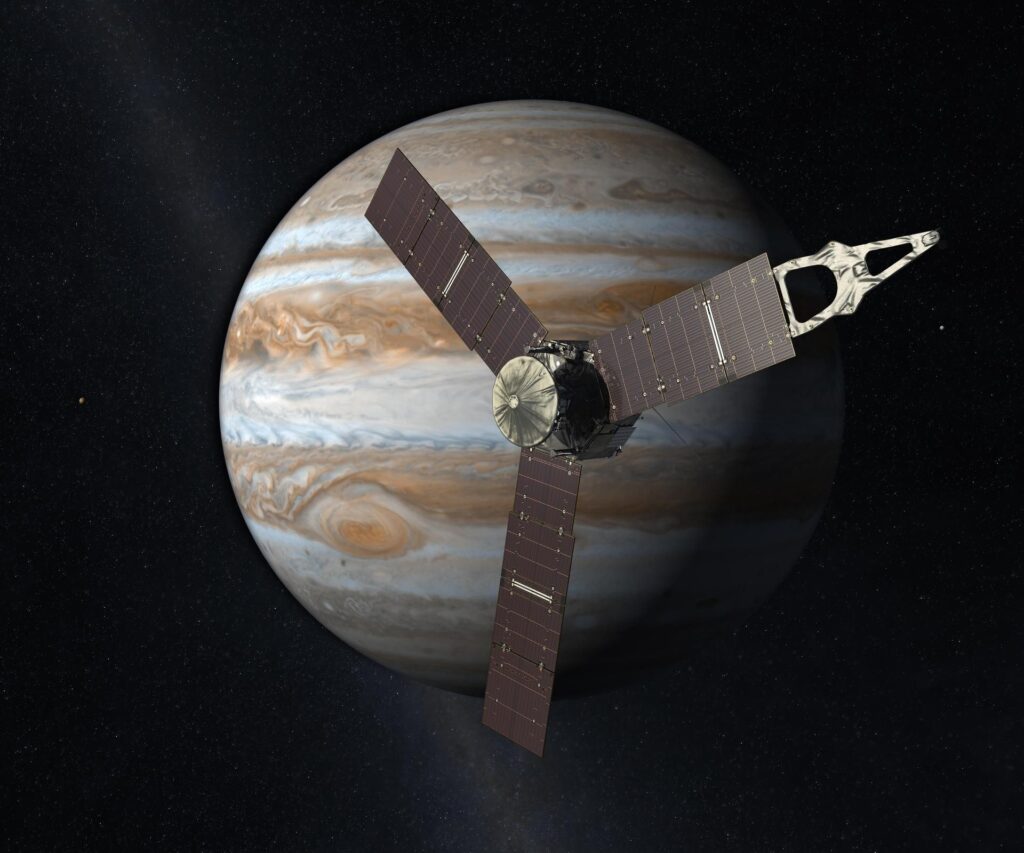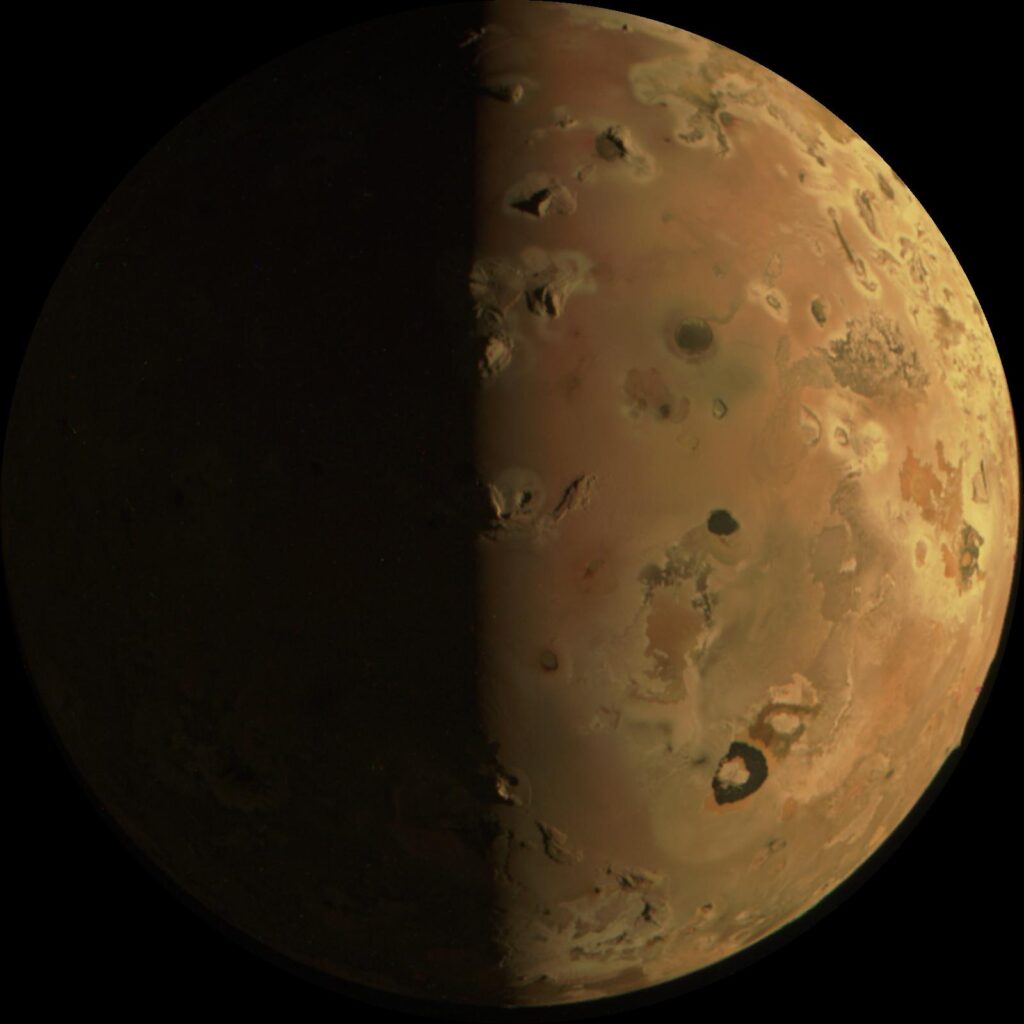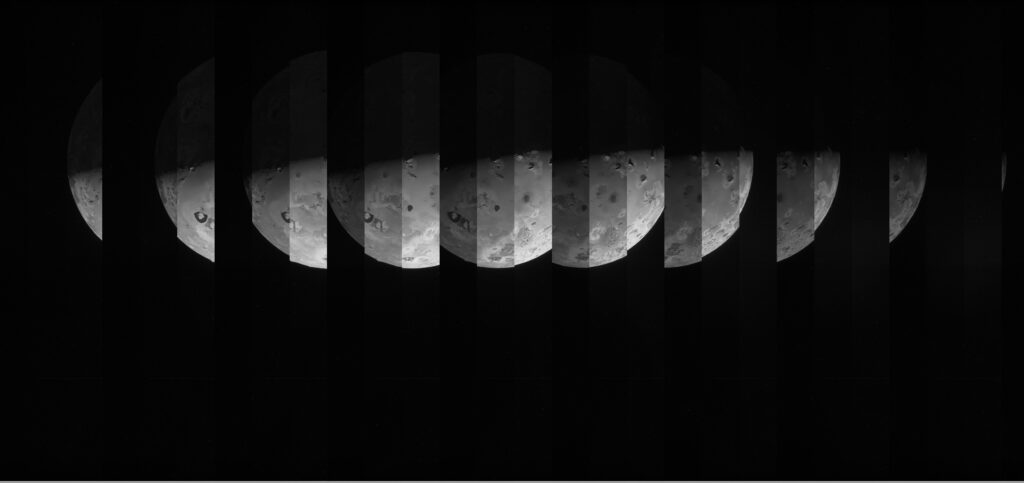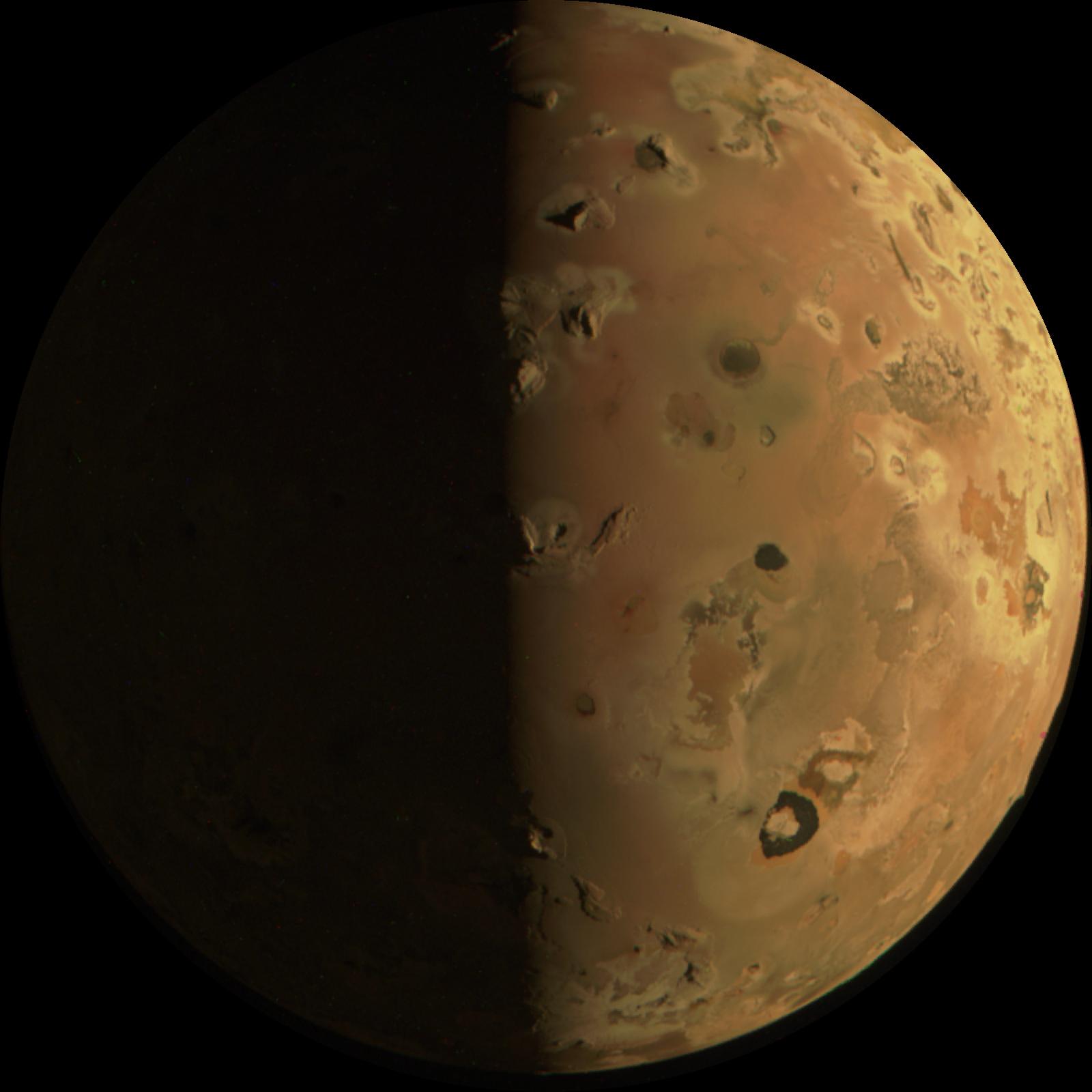If you are into ultra-wide-angle photography, volcanology, or astronomy, this story is for you. The spacecraft Juno, NASA’s mission to the planet Jupiter, has just swung by the Jovian moon, Io. As well as being a contender for having the shortest name of any heavenly body, Io is Jupiter’s innermost and fourth-largest moon. It is also the most geologically active object in the solar system.

Fans of Arthur C. Clarke’s sequel to 2001 a Space Odyssey, 2010: Odyssey Two, might recall mention of Io. Ominously, the derelict spacecraft from the original Jupiter mission drifts dangerously close to the powerful ion flux between Jupiter and Io. The book is an excellent sequel. If you haven’t read it, it’s worth checking out.
Io, an eccentric moon
Io has an eccentric orbit, courtesy of competing gravitational attraction by its larger siblings, and Jupiter itself. This results in repeated squeezing and relaxing of Io. Tidal heating increases its internal temperature, in turn producing volcanic action. Its gruesome surface is pock-marked and covered in yellow dust from sulphur and sulphur dioxide deposits.

Juno’s recent approach allowed it to photograph Io with its wide-angle, high-resolution camera, creatively named Junocam. The camera has a 11mm focal length. Now, that’s what I call ultra-wide angle. It can therefore photograph the entire planet surface as the spacecraft sweeps from pole to pole.
The Junocam optics are comprised of a 14-element all-refractive lens. Its nominal focal length of 11 mm delivers a field of view of about 58 degrees. They were not manufactured by our favourite M-Mount lens designers, Leica, Voigtländer, or Zeiss, but by Rockwell-Collins Optronics.
The clock is running
Down here, on planet Earth, we talk about weatherproofing cameras and lenses. However, up there, in the cosmos, the challenge is radiation-proofing the kit. Despite the designer’s best efforts, the camera will slowly degrade over time. The mission team is therefore trying to extract the most value from the camera before it gives up the ghost.
The Junocam website is an example of NASA’s public outreach efforts. NASA invites amateur astronomers to submit their images of Jupiter and suggest regions of the planet at which to point the Junocam. The website contains many images of Jupiter and its moons, including Io, already taken by the Junocam. Interested parties can download and process RAW files from the Junocam and upload resultant JPEGs to the site.

So, if you want to take your astrophotography to a new level, why not pop along and have a go?
Read more from the author
Astrophotography on a Budget: Exploring the skies under $500
Join the Macfilos subscriber mailing list
Our thrice-a-week email service has been polished up and improved. Why not subscribe, using the button below to add yourself to the mailing list? You will never miss a Macfilos post again. Emails are sent on Mondays, Wednesdays, and Fridays at 8 pm GMT. Macfilos is a non-commercial site and your address will be used only for communications from the editorial team. We will never sell or allow third parties to use the list. Furthermore, you can unsubscribe at any time simply by clicking a button on any email.


I used to go and picnic at Arthur’s house – nothing to do with Io or photography, I know!
Arthur had gone to live in Colombo, but his brother Fred looked after the house and Arthur’s library, and Arthur’s ex, Marilyn, used to pop in sometimes. But as the house was rather large, some friends of ours and their children used to live there, along with Fred.
There was a lovely big garden, with an orchard, and one of those automatic pump things, driven by river water at the bottom of the garden, which pumped water uphill to irrigate the rest of the land.
We had snowmen there in the winter, and a barbecue in the summer. Near ..what are those walking creatures called in Star Wars?.. er, ah: Taunton!
“All these worlds are yours. Except Europa. Attempt no landing there.”
“Well, Io is Mordor: Look up Part Three. There’s a passage about ‘rivers of molten rock that wound their way… until they cooled and lay like twisted dragon-shapes vomited from the tormented earth.’ That’s a perfect description: how did Tolkien know, a quarter-century before anyone ever saw a picture of Io? Talk about Nature imitating Art.” Arthur C. Clarke, 2010: Odyssey Two.